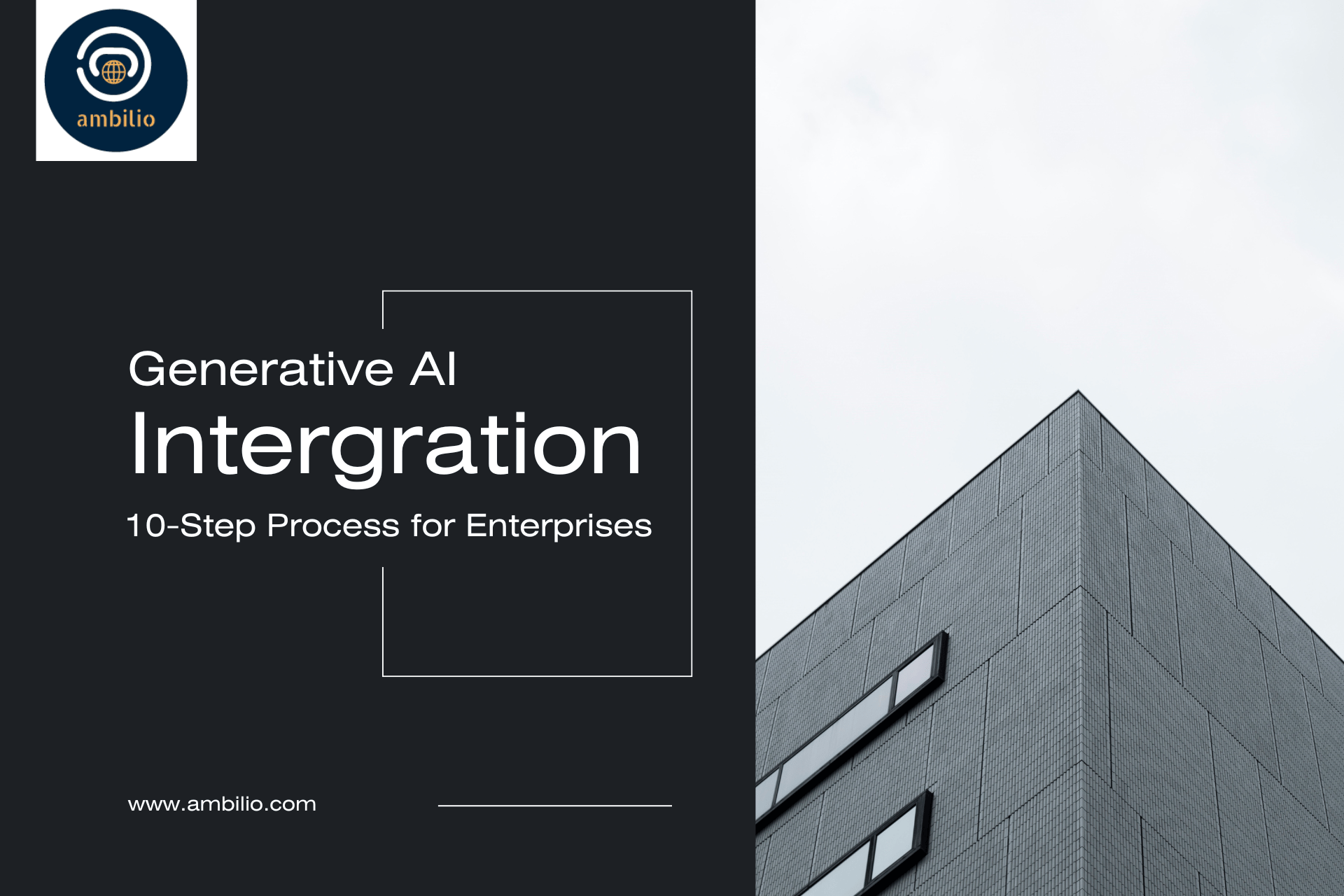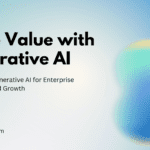Integrating Generative AI into enterprise operations offers game-changing solutions, transforming businesses by enhancing customer service, streamlining processes, and fostering innovation in product development. The adoption of Generative AI enables enterprises to leverage advanced technologies for significant improvements and competitive advantage. Successful integration requires following best practices to ensure seamless incorporation into existing systems. Ambilio presents a curated guide on Generative AI Integration Process, to help enterprises navigate this integration, offering a comprehensive approach to maximize the potential of Generative AI and drive operational excellence.
Generative AI Integration Process
Here, we present a comprehensive 10-step Generative AI Integration Process for enterprise operations, ensuring seamless adoption and maximizing business benefits.
1. Identify Business Objectives
The first step is to clearly define the specific goals and objectives where Generative AI can add value within your enterprise. This involves understanding the core areas that can benefit from AI, such as enhancing customer interactions, automating repetitive tasks, generating creative content, or optimizing operational processes. By pinpointing these objectives, businesses can align their AI strategies with their overall mission and ensure targeted implementation.
2. Assess Data Availability and Quality
Generative AI models thrive on large datasets to produce meaningful and accurate outputs. Therefore, it is crucial to evaluate the availability and quality of data within your organization. Assess your data infrastructure to determine if it can support the rigorous requirements of AI algorithms. This includes checking for data completeness, accuracy, consistency, and relevance. High-quality data forms the foundation of successful AI integration.
3. Select Appropriate Generative AI Models
Choosing the right Generative AI model is a critical step. Research various models and select those that align with your business objectives and data requirements. Consider factors such as model complexity, training time, interpretability, and scalability. For instance, simpler models might be sufficient for straightforward tasks, while more complex models could be necessary for nuanced applications like natural language processing or image generation.
4. Customize and Train Models
Once the appropriate models are selected, the next step is customization and training. Fine-tune the models based on your specific use cases and datasets. This may involve adjusting model architectures, tuning hyperparameters, and selecting optimal training algorithms. Customization ensures that the models are tailored to your enterprise’s unique needs, leading to better performance and more relevant outputs.
5. Integrate with Existing Systems
Integrating Generative AI capabilities into existing enterprise systems and workflows is essential for seamless operation. This could involve developing APIs or plugins that incorporate AI functionalities into your current applications. Ensure that the integration is smooth and that the AI tools complement your existing processes rather than disrupting them. Proper integration enables users to easily leverage AI in their day-to-day tasks.
6. Ensure Data Security and Compliance
Data security and compliance are paramount when dealing with AI. Implement robust security measures to protect sensitive data used by Generative AI models. This includes encryption, access controls, and secure data storage. Additionally, ensure compliance with relevant data privacy regulations and industry standards, such as GDPR or HIPAA. Protecting data integrity and privacy not only mitigates risks but also builds trust with stakeholders.
7. Provide Training and Support
For successful AI adoption, it is vital to educate employees on how to effectively use Generative AI tools within their roles. Offer comprehensive training programs and resources to help staff understand the capabilities, limitations, and best practices of AI systems. Continuous support and education foster a knowledgeable workforce that can maximize the benefits of AI.
8. Monitor Performance and Feedback
Continuous monitoring of AI performance in production environments is necessary to ensure optimal operation. Collect feedback from users and stakeholders to identify areas for improvement. Performance metrics and user feedback help in understanding how well the AI models are meeting business objectives and where adjustments are needed.
9. Iterate and Refine
AI integration is not a one-time task but an ongoing process. Iterate on your Generative AI models based on performance feedback and evolving business needs. Continuously refine model architectures, update training data, and optimize deployment strategies. This iterative process ensures that the AI system remains effective and aligned with business goals over time.
10. Scale and Expand Usage
Once initial implementations are successful, it’s time to scale AI initiatives across different departments and use cases within the enterprise. Explore new opportunities to leverage Generative AI for various applications and business scenarios. Scaling AI usage helps in achieving broader organizational benefits and fosters innovation across the enterprise.
Final Words
Integrating Generative AI into enterprise operations is a strategic move that can transform various business aspects. By following this comprehensive 10-step guide—identifying objectives, assessing data, selecting models, customizing and training, integrating systems, ensuring security, providing training, monitoring performance, iterating, and scaling—businesses can effectively harness the power of AI. This structured approach not only maximizes the potential benefits of Generative AI but also ensures sustainable and impactful implementation.



